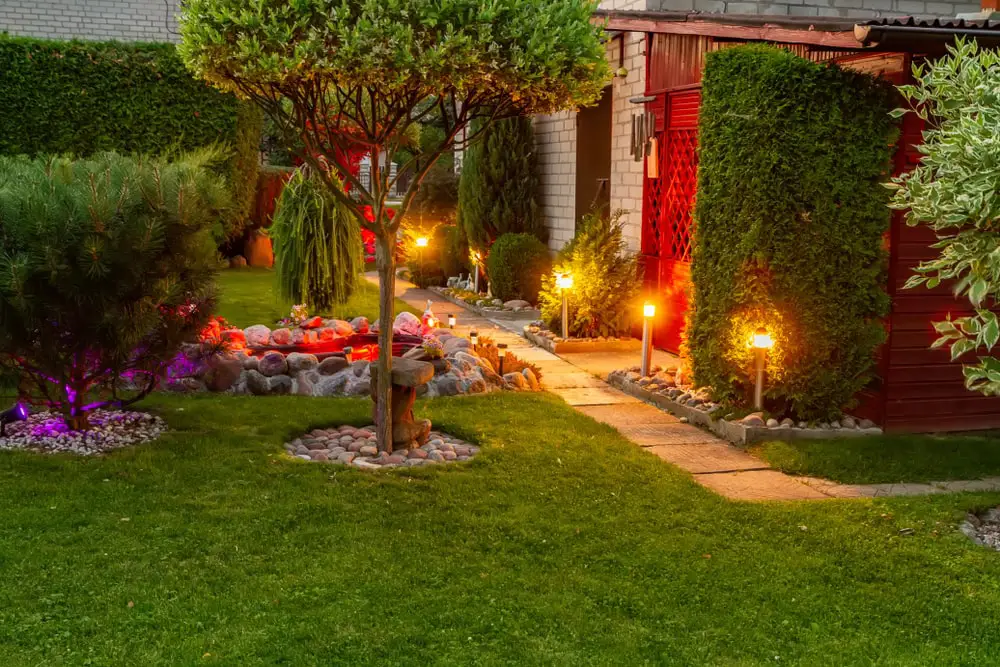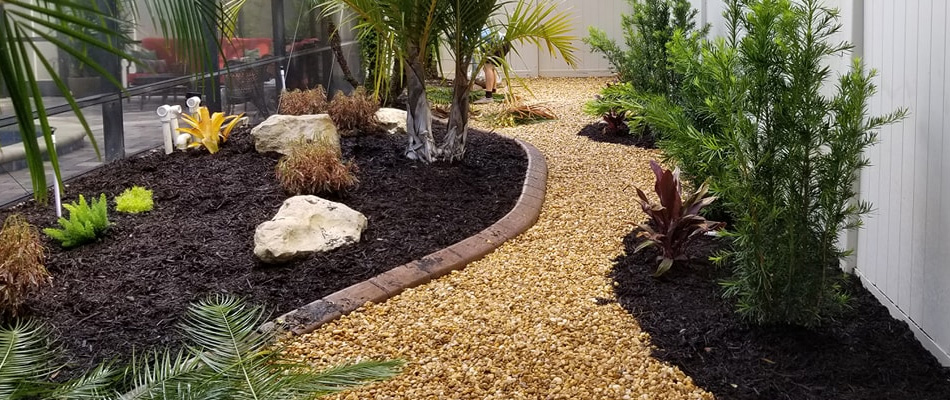What Does Hilton Head Landscapes Mean?
What Does Hilton Head Landscapes Mean?
Blog Article
Hilton Head Landscapes for Beginners
Table of ContentsThe 6-Minute Rule for Hilton Head LandscapesExcitement About Hilton Head LandscapesGetting My Hilton Head Landscapes To WorkA Biased View of Hilton Head LandscapesIndicators on Hilton Head Landscapes You Should KnowHilton Head Landscapes - QuestionsAll about Hilton Head Landscapes
Line produces all forms and patterns and can be made use of in a variety of means in the landscape. Line in the landscape is created by the side in between two products, the outline or shape of a type, or a lengthy direct attribute. Lines are a powerful device for the designer since they can be used to develop an unlimited variety of shapes and kinds, and they manage movement of the eye and the body.

Lines can have several qualities, such as those described listed below, but they typically offer different purposes. Number 1. Lines in the landscape - Landscapers near me. The residential properties of lines identify just how individuals react to the landscape, both emotionally and physically. Straight lines are architectural and forceful; they produce an official character, are typically connected with an in proportion design, and lead the eye straight to a focal point.
Indicators on Hilton Head Landscapes You Should Know
Bent lines produce an informal, all-natural, relaxed character that is linked much more with nature and unbalanced equilibrium. Bent lines move the eye at a slower rate and add secret to the area by developing concealed views.
Upright lines in the landscape consist of tall, narrow plant material, such as trees, or high structures, such as an arbor or a bird residence on a post. Straight lines move the eye along the ground plane and can make a space really feel larger. Low lines are a lot more suppressed and develop a sensation of rest or repose.
The Hilton Head Landscapes Statements
Reduced lines are produced by reduced garden wall surfaces, walkways, and short bushes. Lines are used to attract forms on a plan. In plan sight, they specify plant beds and hardscape areas. Lines are also developed by the vertical kinds of developed attributes and plant product. There are 3 primary line kinds that create kind in the landscape: bedlines, hardscape lines, and plant lines.
Bedlines connect plant material to the house and hardscape due to the fact that the eye follows the line, relocating the look via the landscape. Hardscape lines are created by the edge of the hardscape, which marks the built framework. Line can likewise be developed by lengthy and narrow materials, such as a fence or wall surface.
The Of Hilton Head Landscapes
Form is found in both hardscape and plants, and it is normally the dominant visual element that spatially arranges the landscape and usually determines the design of the yard. The type of frameworks, plant beds, and yard accessories additionally identifies the overall form style of the garden. Formal, geometric kinds include circles, squares, and polygons.
Plants create form in the garden with their outlines or silhouettes, yet form can also be defined by a void or unfavorable room between plants - Landscapers near me (https://disqus.com/by/disqus_mvAiTQ3jyY/about/). Circles can be cycles, or they can be split into fifty percent circles or circle segments and incorporated with lines to produce arcs and tangents
What Does Hilton Head Landscapes Mean?
Circles are a strong style form due to the fact that the eye is constantly drawn to the center, which can be utilized to highlight a focal factor or connect various other forms. Circular types in hardscape and grass panels.
The square type can likewise be segmented and previously owned repetitively to create a grid pattern. Unlike circles, squares are more powerful on the sides, which can be aligned or overlapped to create special patterns and even more complex types. Polygons are many-sided kinds with straight sides. Triangles, as an example, are three-sided polygons.
Twisting lines frequently resemble the all-natural training course of rivers or streams and can be described as smooth lines with deeply rounded undulations. Twisting lines (Figure 3) work well for pathways, plant bedlines, and dry stream beds. Meandering lines can add passion and enigma to a garden by leading viewers around edges to find brand-new sights and areas.
The Of Hilton Head Landscapes

Figure 5. Fragmented sides: tipping stones see post in path. Type is the most long-lasting top quality of a plant (landscape design hilton head). https://pastebin.com/u/h1tnhdlndscps. Common plant kinds are well established and standardized, as kind is the most constant and identifiable quality of plants. Kind can likewise be created through the massing of plants, where the overall mass produces a various kind than a private plant.
A highly different type must be made use of with careone or two job well as a focal factor, but way too many produce chaos. All-natural plant types, instead of over-trimmed forms, should develop the bulk of the structure. The importance of general kind is a lot more or less based on the watching perspectivethe type of a tree can appear quite various to a person standing under the cover versus watching the tree from a range in an open area.
Not known Facts About Hilton Head Landscapes
Plant types additionally produce and specify deep space or open rooms in between the plants, creating either convex or concave types in the gaps. High-arching tree branches usually produce a concave open area under the branches, and a rounded canopy with reduced branches fills the space to develop a convex form outdoors area under the tree.

Report this page